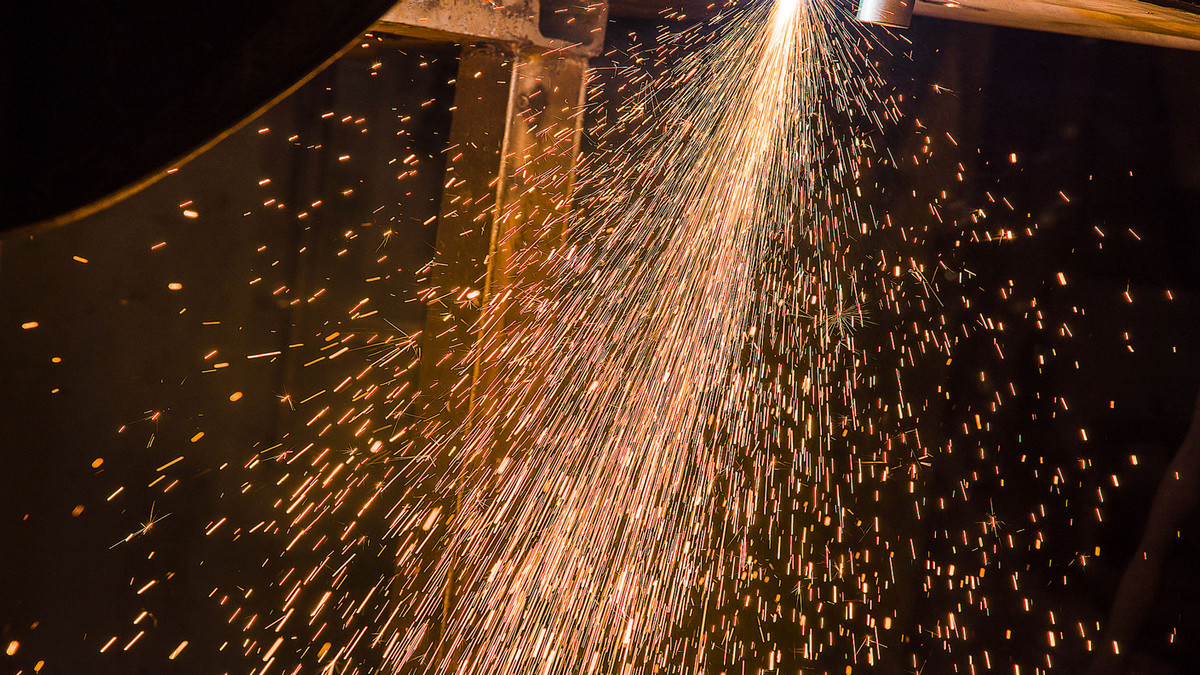The technology of welding is actually connecting two metals together. Its history can be traced back to thousands of years, but it is a technology with a long history, and since its development, welding technology has continued to improve and update.
The technology of welding is actually connecting two metals together. Its history can be traced back to thousands of years, but it is a technology with a long history, and since its development, welding technology has continued to improve and update. The most commonly welded materials are metals, such as aluminum, mild steel, and stainless steel. Also, plastics can be welded. In plastic welding, the heat source is hot air or an electric resistor.
Three Types of Welding at Once
There are actually dozens of types of welding, but we do not want to list all the types one by one. Basically, all welding methods can be divided into three types: pressure welding, blow welding, and fusion welding.
Pressure WeldingPressure welding is the use of an ultrasonic or extremely high-pressure method to allow two solid objects to achieve atomic bonding, which is used to join metal and thermoplastic sheets. Pressure welding is not the welding in our impression that the metal is always treated at high temperature to melt it to achieve the bond between the two objects, but the use of high-frequency sound waves and high pressure to generate horizontal vibration and pressure on the object.
This method has a small influence range and a short heating time. For many objects that cannot be melted, pressure welding is very suitable.
Blow WeldingWelding is divided into hard welding and soft welding, also known as brazing and soft welding for short. The welding method is to use a metal material with a lower melting point than the two workpieces to be welded, and heat the workpiece and this material. The melting point is higher than the object and lower than the two workpieces. After the object melts and solidifies, the workpiece is connected. purpose together. Hard soldering is a material with a melting point higher than 427°C, and soft soldering is a material with a melting point lower than 427°C.
Fusion Welding
Fusion welding is also the most common welding method we usually use, that is, the workpiece is heated to a molten state at high temperature without applying pressure. After melting, the workpiece will solidify and become the two objects we see. connected state.
Many welding methods are classified in fusion welding, including gas welding, arc welding, ion arc welding, laser welding, etc.
CO2 Gas Shielded Welding is Very Different from Mig Welding
Most people often confuse CO2 welding with MIG. Although the welding machines used are the same, the shielding gas used in welding is completely different. Because the so-called noble gas refers to the last group of the element table (helium, neon, argon, krypton, xenon, radon), and CO2 is not a noble gas, so it does not belong to a kind of MIG.
MIG WeldingMIG welding is to continuously send inert gas through the welding nozzle, and completely cover the welding part, so that the quality of the welding part will not change due to the gas in the air. It is also called semi-automatic welding and covered gas arc.
The shielding gas used in MIG welding is a mixture of inert gas or pure gas, and the most important thing is high-purity argon. If it is mixed with carbon dioxide, it will only be in a very low proportion.
MAG WeldingThe commonly used protective gas for MAG welding is CO2, or a mixture of CO2 and oxygen. The same principle is to send carbon dioxide through the welding nozzle. The advantages of this welding method are high efficiency and low cost.
Therefore, the common people often say that CO2 welding is a kind of MAG, and this is a wrong concept. The most obvious difference between MIG and MAG is that the former is mainly inert gas, while the latter is mainly carbon dioxide.
When the industry uses semi-automatic welding machines (MIG and MAG welding machines) to weld mild steel plates, the shielding gas used by MAG is mostly CO2, while the commonly used shielding gas for MIG is a mixture of 80% argon and 20% CO2.
Safety in Welding
There are several risk factors connected to welding. The arc emits extremely bright light and ultraviolet radiation, which may damage the eyes. Molten metal splashes and sparks can burn the skin and cause a risk of fire, and the fumes generated in welding can be dangerous when inhaled.
These hazards can be avoided, however, by preparing for them and by using the appropriate protective gear.
Protection against fire hazards can be accomplished by checking the environment of the welding site in advance and by removing flammable materials from the proximity of the site. In addition, fire-extinguishing supplies must be readily available. Outsiders are not to be allowed to enter the danger zone.
Eyes, ears, and skin must be protected with the appropriate protective gear. A welding mask with a dimmed screen protects the eyes, hair, and ears. Leather welding gloves and a sturdy, non-flammable welding outfit protect the arms and body from sparks and heat.
Welding fumes can be avoided with sufficient ventilation at the worksite.





.png)








